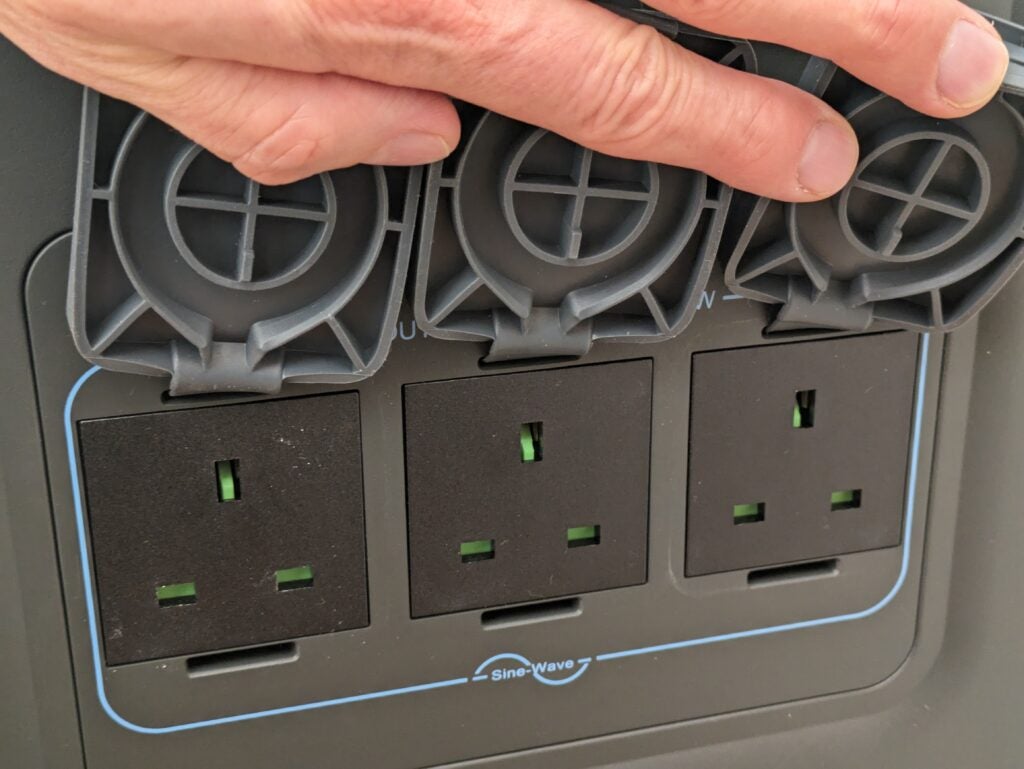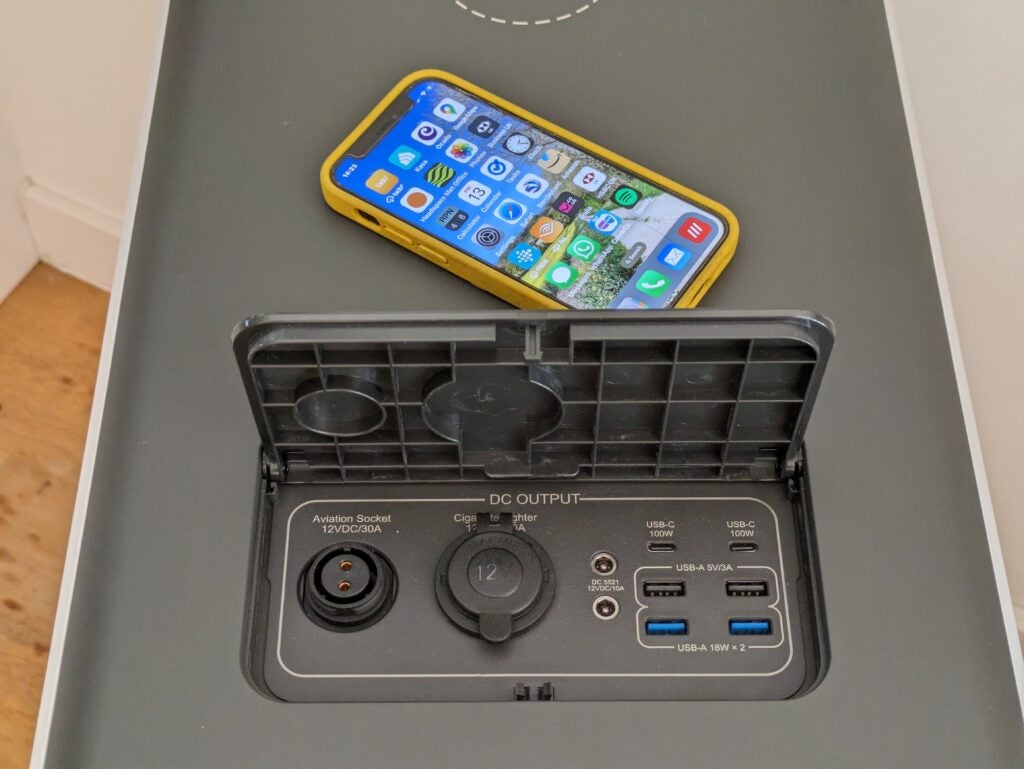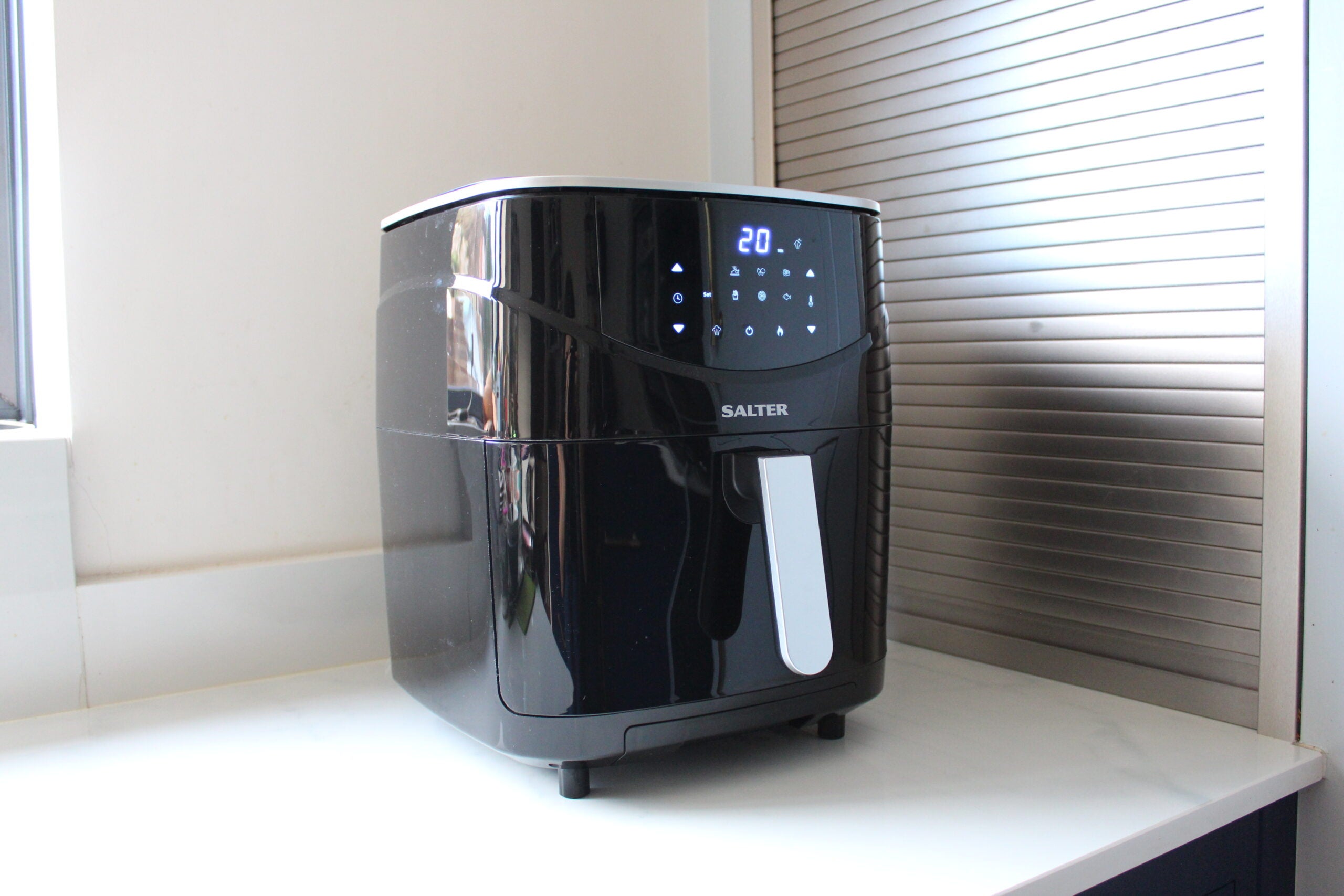Bluetti EP500Pro Review
Big power output, big power storage, big power station





Verdict
Not everyone needs a beast of a power supply, but if you do, the Bluetti EP500Pro is a great choice. It combines a high power output with huge energy storage, making it suitable to power any domestic appliance through even a lengthy power cut. It was completely stable and unflustered in even the toughest of our tests, and proved efficient while recharging on every mains power test. With flexible mains and solar charging support and highly configurable UPS options, the EP500Pro is a highly versatile home power station.
Pros
- Wide range of ports and functions
- Extremely efficient mains performance
- Very stable, even at high load
Cons
- Poor USB output efficiency
- Very big and heavy
Key Features
- A heavy-duty home power stationThis power station can pump out three kilowatts if needed – enough to supply any domestic device. With five kilowatt-hours of onboard storage, it could even get you through a full laundry day.
- A good range of ports and functionsThe EP500Pro is bristling with AC and DC outputs, including six USB ports, two charging pads and a 12V/30A RV socket. You can hook it up to solar panels, too.
Introduction
Most home power stations are designed to take on light or medium backup duties should you lose mains electricity for a while. Bluetti’s EP500Pro is on a different level. This hulking, wheeled battery backup is about as heavy-duty as mobile battery packs get, this side of an electric car. Packing 5kWh of energy storage, and able to supply three kilowatts (3kW) across its three mains power sockets, it will comfortably power anything fitted with a UK plug – potentially for days.
The EP500Pro isn’t just about getting your laundry done in a power cut, though. It comes with multiple USB ports, and a range of other outputs suitable for direct current (DC) equipment. On top, there are two wireless charging pads – a helpful addition if you need a place to casually charge phones and tablets.
This power station can charge its battery at up to 3kW from mains power, at which rate it’ll go from empty to full within about two hours. However, it’ll also take up to 2.4kW of input from solar panels. In ideal conditions it’ll accept a 4kW total input between the two sources, enough to hit 80% charge in just an hour.
Design and features
- Massive and very heavy
- Good selection of ports and functions
- Layout could be better
Bluetti makes two versions of the EP500 power station, both of which have 5kWh of storage. The EP500Pro tested here is the more impressive device, accepting higher mains and solar inputs. Perhaps more significantly, its 3kW output is the maximum possible through a 13A UK socket. The base EP500 offers a maximum of 2kW, which isn’t enough to power very heavy-duty devices such as some kettles or washing machines.
It’s important to realise that the Bluetti EP500Pro is huge – it comes up to my thighs. It’s fitted with smooth-rolling wheels, the smaller of which at the rear both steer and lock, so it’ll stay where you put it. However, at 83kg it’s far too heavy for a single user to lift – even two fit people would struggle to move it upstairs. Given its likely role as a heavy-duty backup for essential household appliances, that’s less of an issue than it might be. While I was testing it, I was happy to just trundle it between my kitchen and utility room.

The EP500Pro has three mains output sockets, each covered by a rubber bung. That’s not overly generous, but you could always use a multi-way extension if you needed more.

The sockets have quite a high tolerance for momentary overloading, with Bluetti quoting five seconds’ resilience at up to 4.5kW, and half a second at up to 6kW. That said, the 3kW sustained maximum is shared across all sockets, so you can’t expect to run a washing machine, kettle and dishwasher all at the same time.
This power station’s sockets are a little lower than ideal if you’re hoping to plug in worktop appliances. I found the cables from my kettle and toaster wouldn’t reach, and had to resort to an extension. I’ve no complaints about the other output ports, which are concealed behind a flap on the top surface. Inside you’ll find four USB-A sockets, split equally between 18W quick charge and 5V/3A specifications. There are two 100W USB-C ports, together with a 12V/10A car and 12V/30A RV socket. Finally there are two 12V, 10A DC 5521 sockets.
The EP500Pro’s 10A DC circuit is shared between its three 12V/10A ports, meaning you can only draw 120W in total, which may limit how you can use them. Similarly, you can’t use other DC ports if the 12V/30A is connected. The top panel is completed with two 15W wireless charging pads.

This power station’s inputs are concealed behind a flap on the front panel, just below the mains sockets. It’s a shame they’re not at the back, where they’d be easier to hide away. Mains power is connected through a CP1 aviation port, a circular three-pin connector secured with a locking ring. Next to it is a smaller CP2 aviation port for connecting solar panels rated from 12-150V, and up to 24 amps in total across two arrays. Bluetti supplies the appropriate mains lead, along with a split solar MC4 adaptor capable of connecting two 12A solar panel strings.

The final port is for communications. It’s used to link up with Bluetti’s optional Home Integration Kit, which lets you connect the EP500Pro as a grid-tied home backup supply. You’ll need a qualified electrician to install and configure this for you.
On smaller power banks, the display usually just provides information, but on the EP500Pro you get a touchscreen with a menu. It’s a decent system, but slightly complex – reflecting the various advanced modes and settings available.

You can also control the EP500Pro through Bluetti’s app, which mirrors some of the options and information available on the touchscreen. Connect using Bluetooth and it’ll help you update the power station’s firmware and join it to your wireless network, after which you can access it from any internet connection wherever you are.
The app lets you turn the EP500Pro’s AC and DC ports on and off, among other things, but you don’t get all the same features available in the touchscreen menu. This makes me nervous, as the screen is quite exposed at the top front of the power station, so a dropped tool or kitchen implement could lead to disaster. It’s possible to buy screen protectors online, and this seems like a sensible extra £10 to protect your investment.
Charging
- Charge from mains, car, or the sun
- Maximum 4,000W input
- Very fast and flexible charging, despite huge battery
The EP500Pro can charge from either an AC or DC input, or both at the same time. It’ll accept up to 3kW of mains power, or 2.4kW of solar, but if both are connected at once, it’ll top out at 4kW. Bluetti says that this maximum is enough to get it to 80% charge in just an hour. But while you can charge at 3kW (13A) from the mains, regular users are limited to Basic Mode, which tops out at 2.3kW (10A). You’ll need a passcode from Bluetti to unlock Advanced Mode.
Bluetti also sells a 500W power adaptor – you could connect it to the DC input and reach a 2.8kW total input, or 3.5kW if you’ve unlocked Advanced Mode.
This power station gives you control over the batteries’ state of charge, letting you configure a maximum and minimum percentage. If the EP500Pro is providing power, it won’t allow the batteries to discharge below the minimum, and if you’re charging via mains power they won’t go above the maximum. This feature’s useful if you only have a mains input and you want to prolong the batteries’ life by keeping them within a certain window. It’s also handy if you want to set a threshold above which any further charge will come from solar panels.
I couldn’t fit the EP500Pro through the hatch where the cables from my solar panels terminate, so I could only test it with an AC power source. I set the minimum and maximum state of charge to 0 and 100%, which allowed me to access the full battery capacity. Set to the maximum 10A available in Basic Mode, it charged at an indicated 2.4kW or so, and was fully charged in just over two and a half hours. My power meter measured 5.79kWh of electricity used which, given the batteries’ 5.12kWh capacity, equates to an impressive efficiency of 88.4%.
Many users are likely to experiment with this power supply’s various UPS mode settings. You can configure the EP500Pro as a standard UPS, which supplies mains power through a bypass circuit until the mains input fails. When it does, the power station can switch to battery power in 20ms, which should be enough to prevent most computers and other sensitive equipment from crashing. It’s not as fast as a dedicated UPS, though. There’s also no data link through which it could warn a connected computer to shut down when the battery is nearly exhausted, though.

The EP500Pro offers a time control mode, where the batteries are charged during cheaper off-peak hours, then discharged during the day to avoid peak-rate consumption. This is a great feature if you have regular off-peak hours, but note that there’s no service to automatically sync it to variable rate tariffs such as Agile Octopus.
The remaining modes include a PV (solar) priority mode, in which the batteries only charge to 30% on mains power, with any remaining charge coming from solar. Or you can define your own custom UPS behaviour with bespoke percentage, time and input settings.
Performance
- Rock-solid power output
- Excellent efficiency, especially at medium and heavy loads
- Very quiet, even when working hard
This power station’s high specifications meant that testing it to its limits was a challenge. It could comfortably charge my electric car at the highest 2.3kW setting that its standard plug charger supports, so I added a second 750-watt load to get the total just above 3kW. The EP500Pro indicated it was supplying almost exactly that, and it continued to do so for a little over 90 minutes until its batteries were finally drained.
Surprisingly, but reassuringly, the EP500Pro barely seemed troubled by the exertion. Its cooling fans stepped up and down periodically, but they never became especially loud. By the end of the test the case was just slightly warm in a couple of areas. It’s quite probable that its size is an advantage in both regards – bigger cooling fans shift more air, and are quieter.

Few people will want to charge an EV from a power bank, so I tried a few more conventional loads. The EP500 Pro had no problem powering my 1.8kW kettle at the same time as either my toaster or microwave, each of which peak at about 1.2kW. It coped with my washing machine at the same time as my heat-pump dryer, too. It’s important to note, though, that there’s a bit of variation in appliances: some kettles are 3kW, for example, while it’s common for washing machines or dishwashers to use around 2.4kW. Combining heavy duty appliances could easily take you over the 3kW limit, which would shut the EP500Pro down.
I was a little underwhelmed by the lack of data available from the app and touchscreen. Like other power banks, the EP500Pro shows how much power is going out and coming in, but it doesn’t do the sums to let you know when you can expect it to stop charging, or run out of energy, depending on the balance. Finally, you can’t schedule either the AC or DC outputs to turn on or off, or set a timer to automatically turn them off after a given period.
Using a mains power meter, I measured a total output figure of 4.5kWh for my heavy duty test. Assuming the Bluetti’s 5.12kWh battery completely discharged, that’s an impressive efficiency of 88%. It did even better on a second test, hitting 90.8% when supplying a middling 1.7kW load. Like other power stations, its efficiency was lower on a longer, low-power test, with the EP500Pro reaching 82.4% when powering a sustained 200W load.

My only real disappointment at this power station’s performance came in my USB test, which uses a constant 60W load to check DC efficiency. Other power stations often record their best result here, but the EP500Pro supplied only just over 3kWh, an efficiency of 59.1%.
It’s hard to be certain why this was, but it’s possible that it’s down to the operating power of the EP500Pro itself during this multi-day test. Bluetti doesn’t give a figure for the unit’s own power consumption with the DC ports on, but it quotes 25W with both AC and DC active, which would be enough to explain the missing energy. It’s a shame you need the fully powered device to connect DC equipment.
In practice, the best way to work out a power station’s efficiency is by looking at a round trip. Using my best figures for charging and recharging, I measured a strong round-trip efficiency of 80%. In other words, for every kilowatt hour I supplied to the Bluetti, I was later able to use 0.8kWh.
But where the EP500Pro really excels is in value. Bluetti says its batteries will retain 80% of their stated capacity after 3,500 charge cycles, and 50% after 6,000. Calculated for the first 3,500 cycles of its life, this power station could store just under 18,000kWh – that’s 18 megawatt hours. The EP500Pro’s asking price varied during the time I had it for review, but it was generally available at £3,999. Divide this by its lifetime storage capacity and you get a figure of 22.3p per kWh stored – comfortably one of the lowest we’ve seen.
Latest deals
Should you buy it?
A heavy-duty home backup
If you need a power supply that can handle any equipment, out-last most power cuts, and work with a medium-sized solar array, the EP500Pro is ideal.
Overkill for most users
This is an expensive and very big power supply. If you don’t need its stamina or high output, you could save a lot.
Final Thoughts
Bluetti’s EP500Pro joins the ranks of our favourite power stations. It’s efficient, has a large amount of storage, and comes with the grunt to power any home appliance. I like its flexibility, and particularly its ability to accept so much solar power – you could potentially even use it to take a garage or a garden office off-grid.
At the same time, it’s not without compromises. Its weight and size stretch the definition of mobile, while its app and display could be a little more useful. It’s also worth being aware that if you primarily want this power station to store and benefit from green or off-peak energy, a permanent home battery storage system may prove better.
You should also consider that many modern kettles, dishwashers and other appliances have peak power demands well below 3kW. If you don’t need all of the EP500Pro’s storage or its impressive maximum output, you could save significantly on a smaller power station, such as the Anker SOLIX F2000.
How we test
We test every battery station we review thoroughly over an extended period of time. We use standard tests to compare features properly. We’ll always tell you what we find. We never, ever, accept money to review a product.
Find out more about how we test in our ethics policy.
We test with a variety of devices to see how long the battery will last.
We test different charging methods to see how quickly the battery can be topped up.
FAQs
Running on mains power, the Bluetti EP500Pro will switch to battery power in 20ms, making it a good backup for all but the most sensitive equipment.








